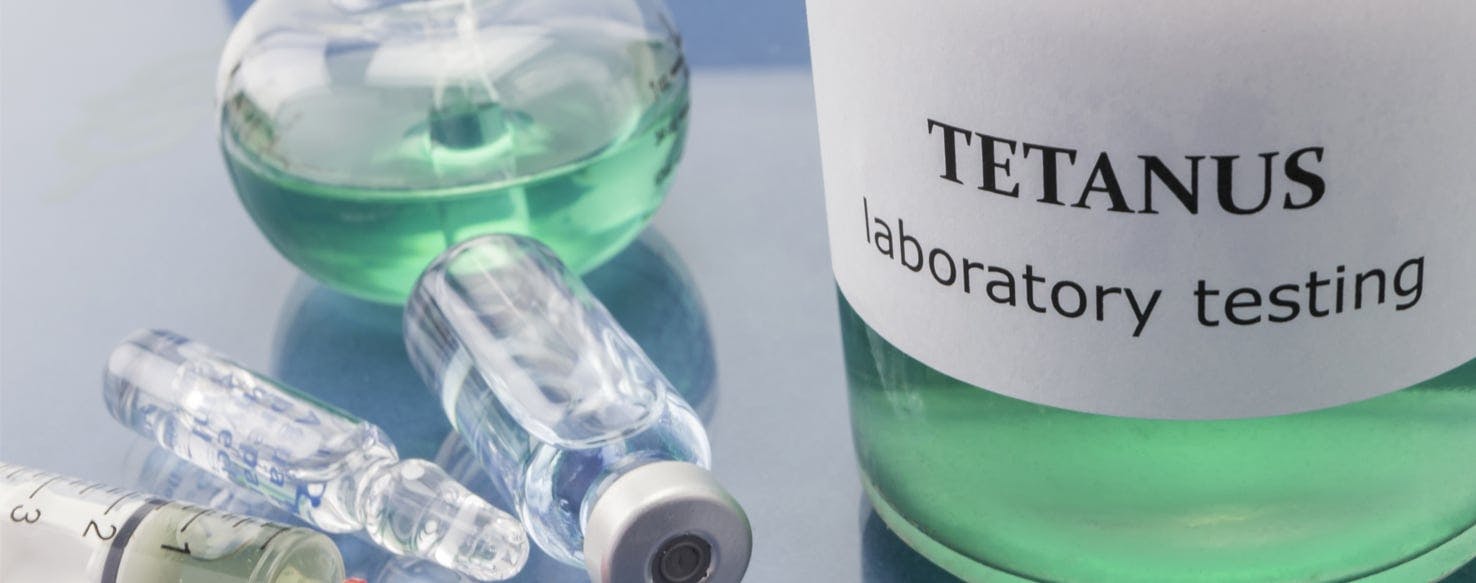Tetanus is a deadly condition that blocks the nerves and causes contractions in the muscles. This disease is caused by the Clostridium tetani bacteria, which is a type of bacteria that produces a toxin called tetanus toxemia.
These bacteria are often found in the soil and dirt and can infect the body through a deep cut or a puncture wound. The wound can close and heal, but the bacteria remains inside the body where it can grow and spread. If not treated properly, it will eventually discharge a nerve toxin which triggers severe contractions in the body, dehydration, and lockjaw.
The bacteria affect most mammals, including human beings. And although there was a time when tetanus was considered very deadly, it can now be avoided and also treated, as long as it is detected early. The best option to fight this disease is the injection of an antitoxin, and immunization shots to avoid the bacteria.
How about your furry friend, though, who spends plenty of time in the yard digging in the soil and dirt looking for treasures? Can dogs get tetanus?
Yes, it is possible for dogs to get a tetanus infection, although it is very rare.
Does My Dog Have Tetanus?
One of the most common ways a dog can get infected with tetanus is if they step on a sharp object that is contaminated with Clostridium tetani and the bacterial spores bury deep within the tissue. There are also some rare cases where tetanus is transmitted via a dog or animal bite.
If you suspect your pet might have tetanus, observe them very carefully and check for the following symptoms:
- Rigid legs while standing straight
- Muscle spasms
- Drooling
- Stiffening of the tail
- Stiffening of the neck and the jaw
- Grin-like facial expression
- Erect ears
- Face swelling
- Dehydration symptoms
- Difficulty in eating
- Difficulty in breathing
- Constipation
- Fever
- Convulsions
If not treated early, tetanus could be fatal for your dog. However, the only accurate way to diagnose tetanus is to see a veterinary professional. The veterinarian will then conduct a full physical examination of your dog and test their heart rate, blood pressure, temperature, and reflexes. If the clinic is equipped with electromyography, they will be able to record the electrical activity of the muscles.
If the vet considers a tetanus infection might be possible, laboratory tests will need to be performed, such as a CBC (Complete Blood Count), urinalysis, and a blood chemistry profile. A high white blood cell count in the CBC test might indicate an infection of the bacteria; an increase in creatine phosphokinase may show the presence of the nerve toxin; and finally, the urinalysis may pinpoint certain proteins that relate to muscle contractions.
How Do I Treat My Dog's Tetanus?
If your dog punctures their paw with a sharp object, the first step is to seek professional help. If you are unable to take your dog to a veterinarian immediately, clean the wounded area as well as you can. Once the bleeding stops, avoid covering the wound too tight since the oxygen in the air is a deterrent for the bacteria's growth. However, it is important to take your dog to the vet after sanitizing the wound.
The first thing the veterinarian will do is to stabilize your dog. The vet may introduce intravenous fluids through an injection and, considering the gravity of the symptoms, may also use oxygen therapy to avoid respiratory failure. The next step will be to prevent toxins from affecting the body so that the vet can medicate your pet with antitoxins (tetanus immunoglobulin), antibiotics (metronidazole), muscle relaxants (baclofen), anticonvulsant (diazepam), and strong sedatives (acepromazine). Your dog will be under observation and will be required to stay in the clinic or hospital until they are stable.
Depending on the gravity of the infection and how early the treatment was applied, it may take a while before your dog is back to normal. Keep your dog in a quiet room to recover, and if there was any lockjaw, you need to be very careful during feeding times. Your vet will instruct you on how to do feed your dog properly, although a soft or liquid diet might be required for some time.
How is Tetanus Similar in Dogs and Humans?
Between humans and dogs, there are a lot of similarities in the way the tetanus symptoms manifest:
- Muscle stiffness: The rigidity of the muscles due to the increasing number of tetanic muscle spasms
- Locking jaw or lockjaw: A late-stage symptom of the disease
- Difficulty in swallowing and breathing: Without proper treatment, the neurotoxin will eventually reach the lung muscles and make it harder to breathe
- Dehydration and starvation: Because of any lockjaw, the infected person or canine will be unable to drink or swallow water, resulting in severe dehydration
- Death: If not treated properly, tetanus can eventually kill the infected animal or person as a result of asphyxiation
How is Tetanus Different in Dogs, Humans, and Other Animals?
Tetanus is most commonly found in humans, cattle, sheep, goats, pigs, horses and dogs. However, tetanus infection is very rare in cats, birds, and rodents.


